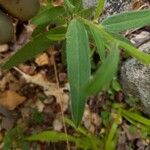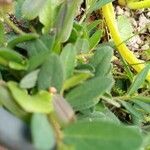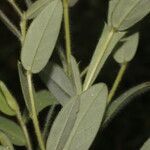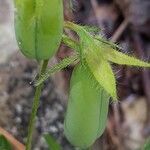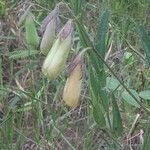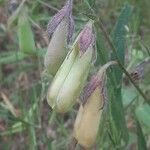Cal obscurely bilabiate, the upper lip less deeply cleft than the lower and with broader lobes; standard suborbicular, short-clawed; wings not auriculate; keel-pet connivent on both margins, strongly convex on the lower side; stamens 10, monadelphous below the middle, the sheath cleft on the upper side; filaments alternately long with subglobose anthers, and short with linear anthers; distal part of the style usually with 1 or 2 lines of hairs; pods subglobose to cylindric or ellipsoid, inflated; seeds 2–many; annual or perennial herbs, or shrubs in the tropics, with simple (in all our spp.) or trifoliolate lvs and usually yellow fls in racemes. 600, mostly warm reg.
Cal obscurely bilabiate, the upper lip less deeply cleft than the lower and with broader lobes; standard suborbicular, short-clawed; wings not auriculate; keel-pet connivent on both margins, strongly convex on the lower side; stamens 10, monadelphous below the middle, the sheath cleft on the upper side; filaments alternately long with subglobose anthers, and short with linear anthers; distal part of the style usually with 1 or 2 lines of hairs; pods subglobose to cylindric or ellipsoid, inflated; seeds 2–many; annual or perennial herbs, or shrubs in the tropics, with simple (in all our spp.) or trifoliolate lvs and usually yellow fls in racemes. 600, mostly warm reg.
A herb. It grows 60 cm tall. The leaves have one leaflet. They are 2-5 cm long by 0.4-1.5 cm wide. They are narrowly oval. The pods are 1.5-2.5 cm long. The seeds are kidney shaped and 3-5 mm across.
